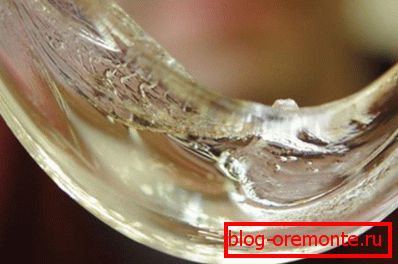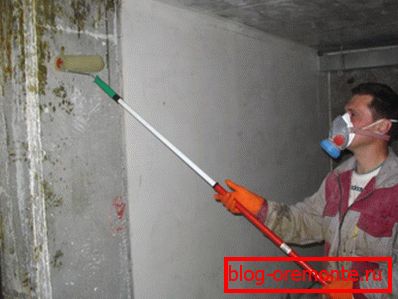Liquid glass for concrete - advantages of use
Liquid glass is an aqueous solution of sodium silicate or potassium. This composition was known in the Middle Ages, although it began to be widely used in the construction industry relatively recently.
Sodium silicate is the product of adding sand (or ground silica) and soda to a hot caustic soda solution. The result is a viscous translucent mixture having a white color with a yellowish tinge, called liquid glass.

The advantages of concrete with the addition of liquid glass
Cement mix is obtained by mixing cement, sand and water in certain proportions. If crushed stone is added to this mass, then concrete is obtained. In order to achieve some changes in the properties of such compositions, certain additives are added to the finished mass, one of which is liquid glass.

This additive is distinguished by a very reasonable price, and a number of high technical characteristics. Consider in the table below, what changes in characteristics and properties can be obtained with the introduction of additives in the structure of the concrete composition.
| Properties | Consequences |
| Reduced setting time for concrete | If the total mass will contain about 2% sodium silicate, the setting will begin in about an hour. If the concrete contains 5% silicate - after 40 minutes. This additive also affects the rate of hardening, allowing you to speed up the process by an average of 25%. |
| Liquid glass for waterproofing concrete | Without this additive, the concrete structure is characterized by small pores, therefore, with frequent contact with moisture, it eventually dampens and collapses. Sodium silicate makes it virtually waterproof, preventing not only the imminent destruction, but also the development of fungus. |
| Heat resistance | Plain concrete can withstand temperatures up to 200 degrees Celsius. If you add about 30% of liquid glass, the heat resistance of the material increases by 5-6 times. It is often used to create industrial furnaces. |

Application features
As stated above, concrete with a high content of such an additive has good adhesion and acquires moisture resistance, but at the same time the strength of the monolith is significantly reduced.
Tip! If you want to get a really solid concrete structure, the percentage ratio of liquid glass in the mass should not exceed 3% in it. This applies to the preparation of mortar for pouring the foundation.
Mixtures with a high content of sodium silicate are excellent for repairing foundations, the destruction of which occurred due to excessive moisture.
Instructions for the preparation of the composition in this case, the following:
- Prepare the concrete mix with the usual proportions of cement, sand and gravel.

- Add to the resulting composition 40-50% glass.
- A solution with such a concentration freezes in almost a few minutes, so it must be prepared in close proximity to the object.
During the repair of strip and monolithic foundations, reinforced concrete is often cut with diamond circles in order to remove the damaged segments.
Tip! The resulting mixture is desirable to use immediately, as it differs almost instant seizure and allows you to get rid of the defect for a long time. Thus, you can repair asbestos-cement, ceramic, concrete structures, as well as cast iron pipes.
The same mixtures are used to improve the waterproofing properties of brick and concrete walls, as well as the seams between them.
Sodium silicate makes sense to add to the composition when pouring the foundation in areas characterized by high levels of groundwater. At the same time there is a significant resistance of the monolith to destruction.

A few tips on the preparation and use of the composition
The use of liquid glass for concrete provides for compliance with some recommendations:
- Having determined the proportions of liquid glass for concrete, you must mix it with water.. Then pour the resulting mass into the mortar. Liquid glass solution is poured in a stream, while constantly stirring the composition.
- Since this additive has a rather high viscosity, then when preparing the mixture with your own hands, use a drill with a mixing nozzle.. Otherwise, the mass can start to clutch even before you reach a uniform consistency.

- Solutions characterized by a high content of silicate (from 10 to 50%) must be prepared in a small amount and used immediately after preparation..
- Instructions for the use of liquid glass for concrete does not imply the use of concrete mixers. If the concentration is high, then the mixture may freeze before the end of mixing.
- Since, when using sodium silicate, concrete loses its strength, it is best to use diamond drilling of holes in concrete to sum up the communications., because this technology allows you to maintain the integrity of the monolith.
Conclusion
Using liquid glass as an additive to the concrete mix, you enhance such construction qualities as: refractoriness, moisture resistance and resistance to the spread of fungi, the appearance of salt stains. Naturally, this has a positive effect on the durability of the structure.
All work with liquid glass should be carried out carefully and, although this product does not belong to the toxic class, it is imperative to protect hands and eyes from contact with the composition. More information on the use of the specified admixture for concrete can be found in the video in this article.